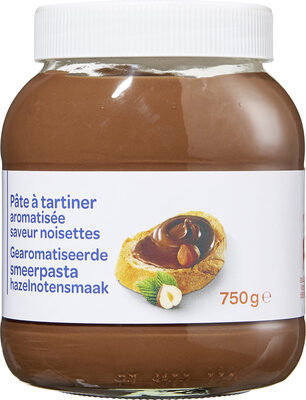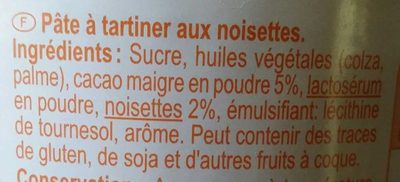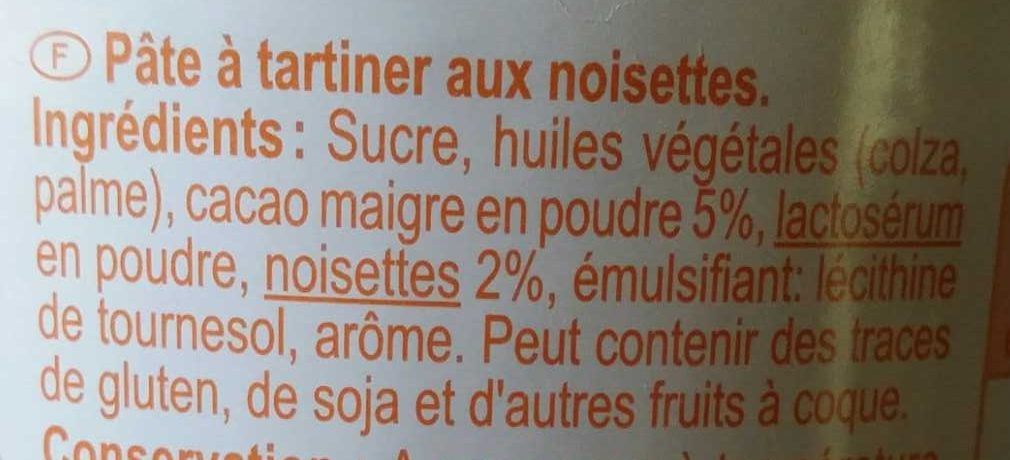Pâte à tartiner saveur noisette - Produits Blancs - 750 g
Important note: this product is no longer sold. The data is kept for reference only. This product does not appear in regular searches and is not taken into account for statistics.
This product page is not complete. You can help to complete it by editing it and adding more data from the photos we have, or by taking more photos using the app for Android or iPhone/iPad. Thank you!
×
Some of the data for this product has been provided directly by the manufacturer Carrefour.
Barcode: 3560070429004 (EAN / EAN-13)
Common name: Pâte à tartiner saveur noisettes.
Quantity: 750 g
Brands: Produits Blancs, Carrefour
Categories: Breakfasts, Spreads, Sweet spreads, fr:Pâtes à tartiner, Hazelnut spreads, Chocolate spreads, Cocoa and hazelnuts spreads
Labels, certifications, awards: Made in Belgium
Producer: Fabriqué en Belgique par / Geproduceerd in België door B00759 pour / voor Interdis
Manufacturing or processing places: Belgique
Stores: carrefour market, Carrefour
Countries where sold: France, Martinique
Matching with your preferences
Environment
Carbon footprint
Packaging
Transportation
Threatened species
Other information
Conservation conditions: À conserver à l'abri de la chaleur et de l'humidité. Ne pas mettre au réfrigérateur. Pour une dégustation optimale, à consommer de préférence avant le : / N° de lot : voir sur le dessus du couvercle.
Customer service: Interdis - TSA 91431 - 91343 MASSY Cedex - France
Report a problem
Data sources
Product added on by openfoodfacts-contributors
Last edit of product page on by org-carrefour.
Product page also edited by ecoscore-impact-estimator, kiliweb, loverock, packbot, quechoisir, roboto-app, rominagrobis, scanbot, tacite, yuka.VzRCUkNZQlJuTWNid2NZanpETHEwYzFIbDdXRVVXTzBEdkk2SVE9PQ, yuka.sY2b0xO6T85zoF3NwEKvllVWdODTsm7uHUfTv1SF6veBNMDkU9VIw7CjHqo.










